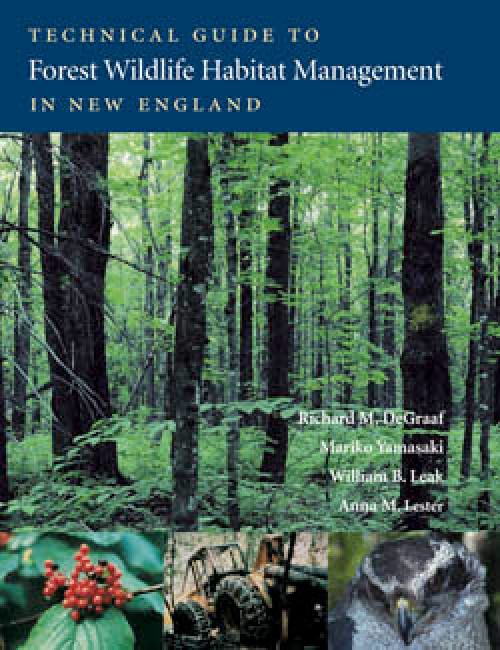by By Richard M. DeGraaf, Mariko Yamasaki, William B. Leak, Anna M. Lester
University Press of New England, 2007
There’s sort of a running gag in the Northern Woodlands office: “Who has the copy of New England Wildlife?” Hardly a week goes by without one of us having to raid another’s desk to nab this essential text. We used to have a number of copies floating around the office, yet all but one seem to have made the journey to our respective “home offices,” leaving just the single, well-thumbed copy.
New England Wildlife: Habitat, Natural History, and Distribution, published in 2001, is the first in a series of three volumes produced by U.S. Forest Service biologists Richard DeGraaf and Mariko Yamasaki. The book describes the natural history (range, habitat requirements, breeding period, food habits) for nearly every terrestrial amphibian, reptile, bird, and mammal in the region, and then places each animal in a matrix of potential habitats, showing where the species is likely to be found during breeding, feeding, and winter.
DeGraaf and Yamasaki teamed up with biologist Anna Lester and silviculturalist William Leak for volume two in the series, Landowner’s Guide to Wildlife Habitat (reviewed in Northern Woodlands in Autumn 2005). The book shows “what the various [silvicultural] treatments look like on the landscape, so landowners can visualize the results and choose methods that best meet their goals. For all options, habitat changes and wildlife responses are provided. Our goal is to enlist private landowners in the stewardship of New England’s forest wildlife.”
Now the foursome has completed the last volume in the trilogy: Technical Guide to Forest Wildlife Habitat Management in New England. Written for the professional forester and land manager, the book goes into much greater detail than volume two and discusses a broad range of habitats, both forested and non-forested, a variety of silvicultural methods based on forest type and wildlife goals, and several “external” issues affecting habitat in New England, such as invasive plants and forest fragmentation.
Professionals may prefer the new volume to the landowner’s guide, while landowners may prefer the latter’s distilled perspective. But if you have a hankering for this sort of thing – wildlife and forestry and our place in the natural order of things – you are likely to find value in all three. But at the very least, don’t miss volume one, New England Wildlife, which should be on the bookshelf of every wildlife enthusiast in the region.
“Everything is connected to everything else” is one of the underpinnings of ecology, and nowhere is this truth more apparent than in the collected knowledge in three books. A second, more explicit message of the trilogy is one that runs increasingly counter to our urban and disconnected view of the natural world: an appeal for management. “New England’s forest and woodlands, taken together, provide a wide range of habitats that still support virtually all the species present before European settlement. In much of the region, however, habitat diversity has declined in recent decades as forests have matured. Young forest and old-field habitats are disappearing. The net result is a change in the region’s wildlife populations favoring forest species while early-successional ones are declining. Declines in wildlife diversity can be reversed but active habitat management, starting now, is required.”
If there’s anything wrong with this trilogy of reference books, it’s their size. Not that there’s too much information or that they’re too technical or too complicated. At a combined 8 pounds and 898 pages, it’s going to be difficult for me to hide them under my coat for the trip to the “home office.” But these books are so worth it, there’s no reason not to try.


